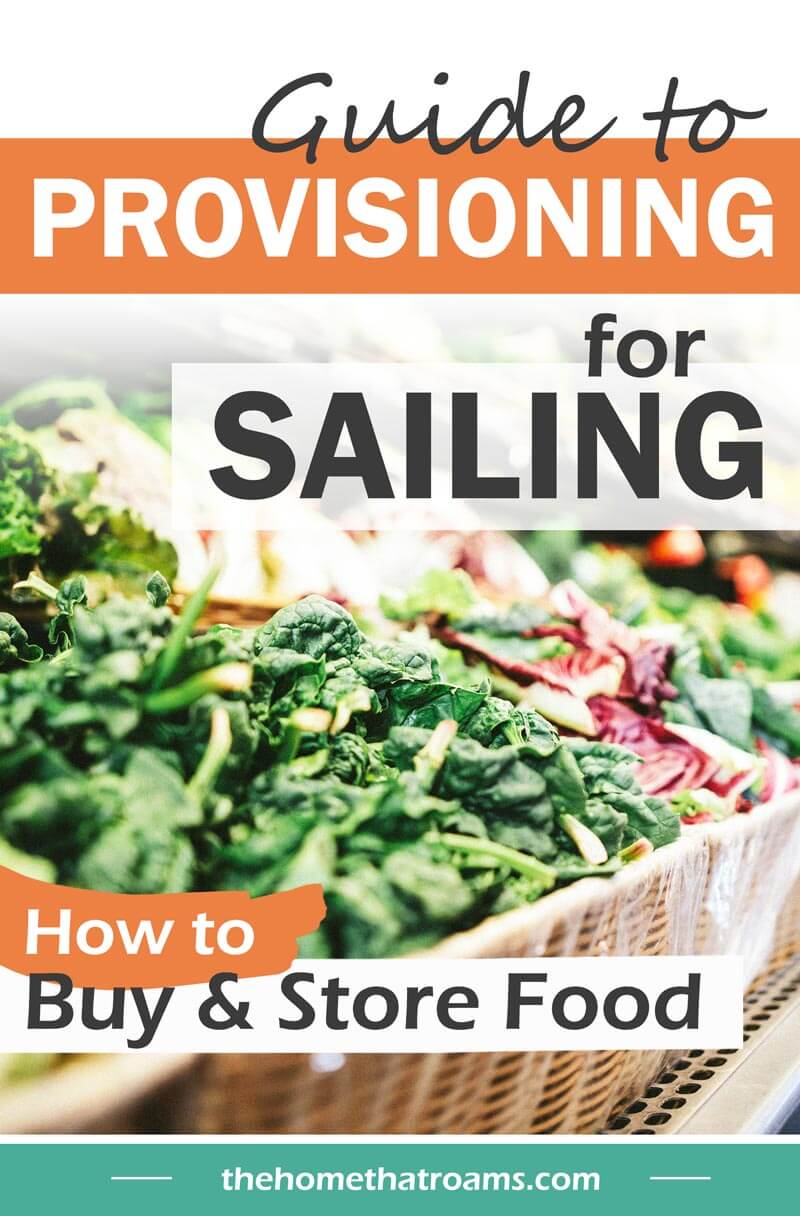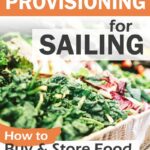Practical Guide to Sailboat Provisioning
As an Amazon Associate, we earn from qualifying purchases. We also earn from other affiliate websites. See our full disclaimer.
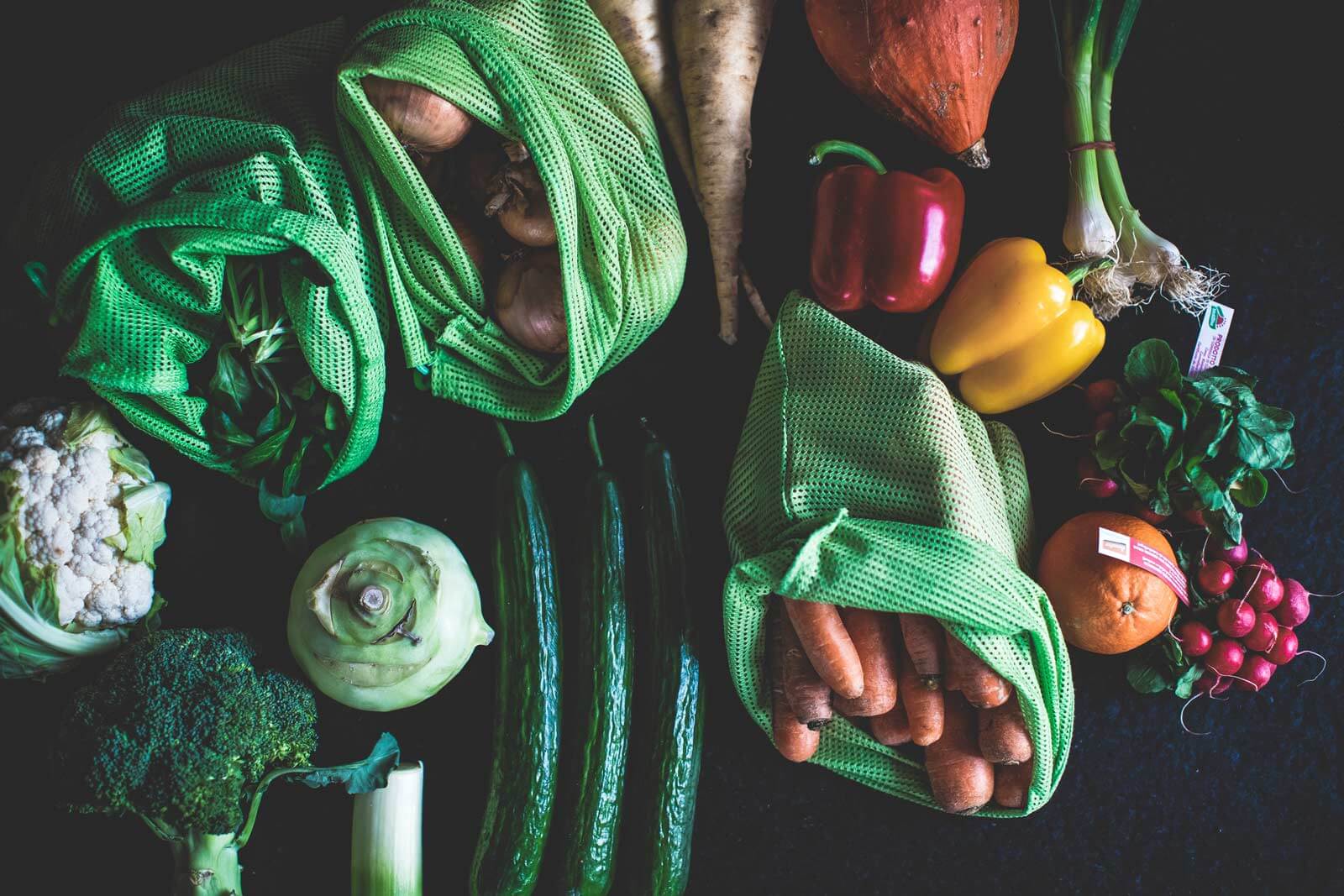
How to Buy and Store Food
Provisioning for a long sailing trip can be daunting. But even when coastal cruising, it can be a mission to go to shore and retrieve food and other stocks.
The better you provision your boat, the longer before you’ll need to find your way to a store. Not to mention schlepping all the stocks back to the boat. Storage to extend the life of ingredients also means fewer large provisioning runs.
Below are tips for sailboat provisioning, as well as some ideas for foods with a longer shelf life.
What Do You Eat on a Sailboat?
The short answer? Anything you want. You just might go about preparing things a little differently.
One key strategy of provisioning on a boat is to buy basic ingredients. When you start from scratch, you can be more flexible with what you make and substitute. Here are five examples.
Once you start thinking this way, you’ll realize how little you can’t put together when you have the basics. Not to mention all the fridge space you save by making things like sauces and dressings just when you need them.
This strategy will give you the power to be much more flexible. So when you find those fresh ingredients at the market or get gifted a piece of fresh fish, you have all the right components for the rest of the meal.
READ NEXT: Check out our boat meal ideas, including 7 Easy & Flexible Meals on a Boat and 5 Simple Ideas for Breakfast on a Boat.
Meals to Eat Underway
The above said, you will want some prepared foods for times when you can’t cook underway or in a rolly anchorage.
Canned soups are a great option to have on hand to warm up. Packaged meals like Tasty Bites are perfect for boiling alongside a rice pack.
You can also come up with some make-ahead meal options such as tuna or chicken salad, soup or stew, and rice or pasta dishes.
What to Drink on a Boat
Individually bottled beverages can eat up boat storage and might even relocate your waterline.
Finding ways to cut the space, trash, and weight that comes with drink provisions can make life a little easier and the boat a little lighter.
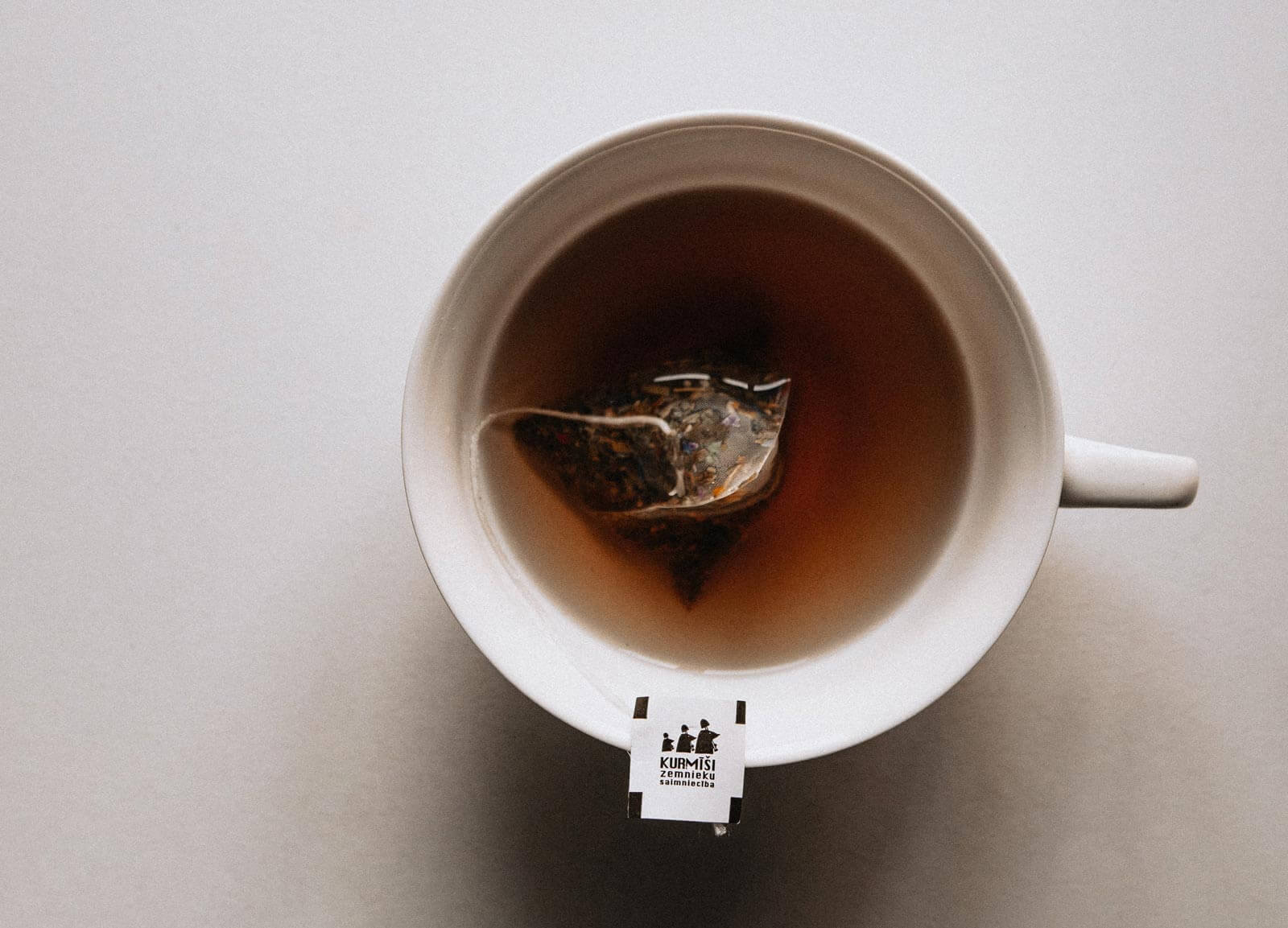
Water
First off, you’ll need water! If your drinking water comes from the boat’s water tanks, be sure to have a backup source of water. In case the water tank is somehow contaminated or springs a leak, you’ll need a secondary option. Carry bottled water or gallon water jugs just in case.
Tea and Coffee
Both coffee and tea require less space for storage and make little trash. They do require freshwater, so take this into account when estimating water rations.
Alcohol
Although we love a nice bottle of wine, bagged wine is so much easier to store and makes trash management easy peasy. We ditch the wine box when we provision and store the wine bags flat in shallow plastic containers. These containers can then be stacked in the back of a berth.
We might also keep a few nice bottles of wine for special occasions!
Liquor is usually easier to store on a boat as well. You can get a Soda Stream or Drinkmate for making mixers as needed, such as coke or tonic water. Just remember to provision the CO2, or you’ll be without your mixers!
Tips for Storing Food
A big part of provisioning is storing your food. On a sailboat, you’ll face a few obstacles when it comes to maximizing the longevity of your stocks.
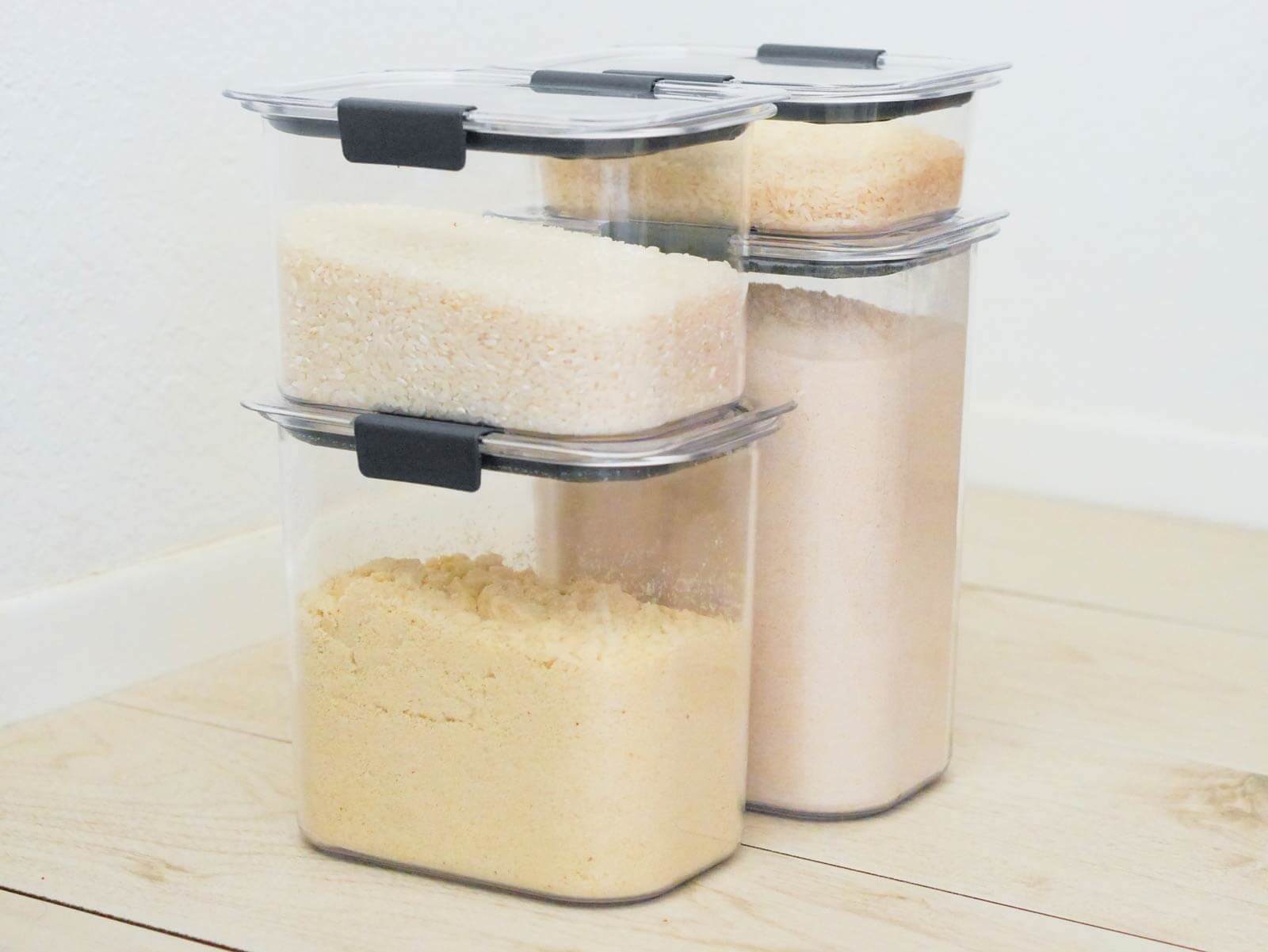
Here are a few things to think about when storing provisions.
- moisture
- bugs
- limited fridge and freezer space
- inconsistent fridge and freezer temperature (even great boat fridges aren’t as cold or as well cooled as a residential fridge)
- movement of the boat (storing your items for rough seas and anchorages)
Here are storage tips for preventing food spoilage and protecting your food supply.
Storing Fresh Vegetables and Fruits
Greens and Herbs
- Store leafy greens and herbs in a cotton bag in the fridge.
- Another option for herbs is to cut about an inch off of the stems and put them in a cup of water. Top them with a plastic bag and rubber band. These usually fit nicely in the fridge door.
- Green onions are an easy option when it comes to regrowing vegetables. Put them in an area with lots of light and cover just the roots with water. Change the water when it starts looking cloudy. Trim the greens when you need them and let the regrowth continue.
Fruits
- Apples keep better in the fridge, but we don’t usually have the space to cool them. Keep apples in a fruit basket or hammock until there’s some free fridge space a week or so after the last provision.
- Keep bananas away from any fruits and veggies. They will speed up the ripening process.
Other Vegetables
- Store celery in the fridge wrapped tightly in tin foil.
- Store onions and potatoes in a cool, dark, dry area (not easy on a boat). Don’t store these together since onions emit ethylene gas that will rot your potatoes. We store onions and potatoes in an open container under different areas of the settee. Remember to check them regularly so you can eliminate any spoilage quickly.
- Butternut and spaghetti squash can last for one to two months when stored in a cool, dark, and dry spot. Those storage requirements can be a tall order on a boat, so plan for them to last 3-4 weeks.
- Store heads of cabbage in a plastic bag in the crisper drawer if available. Instead of cutting straight into the cabbage, peel back the outside leaves to use as you need them. Cabbage should last at least a month, if not two, in the fridge.
Storing Dry Goods
- Store rice, flour, and other baking supplies in air-tight containers.
- Break up bulk supplies so if one bag is contaminated, you don’t lose your whole stock.
- Double bag dry goods that aren’t stored in an air-tight container.
- Store small containers and bags in plastic tubs. If there is a leak, your supplies will be protected. Tubs also help with organization and keep items from shifting around while underway.
Freezing Food
There are a few things that you can stock up on that do good in the freezer.
- butter
- cheese (freezing can change the texture of cheese, so just make sure you are going to melt it if you use it frozen)
- meat (vacuum packed for longer storage)
Organizing Provision Storage
Store similar provisions together so you won’t have to remember where something is.
- grains, pasta, etc.
- canned goods
- flour and baking ingredients
- condiments and extra spices
- snacks
With bulkier provisions, store a small amount in an accessible location and put the large bag in a storage area. This method works well for dry ingredients such as cornstarch, flour, baking powder, etc.
Getting Rid of Packaging
After your provisioning trip, remove all unnecessary packaging from your items. For items stored in a box, remove and store them in a plastic bag or air-tight storage container.
For things like boxed mac and cheese, I add the pasta and cheese packet to a small plastic bag. You can then store all the individual bags in a container or large bag. This will save space, and you can avoid lugging around cardboard trash. Also, bugs definitely like that cardboard!
Provisioning Lists and Recipes
Something you’ll learn when you start provisioning is it’s a bit of a job to manage all the aspects of food on a boat.
- tracking what food you need
- where to buy food
- meal planning
- recipe organization
All these tasks take time and good organization.
A fellow cruiser recommended the Paprika app to me for saving and managing recipes. It costs a few bucks, but it makes grocery lists and recipe management a lot easier.
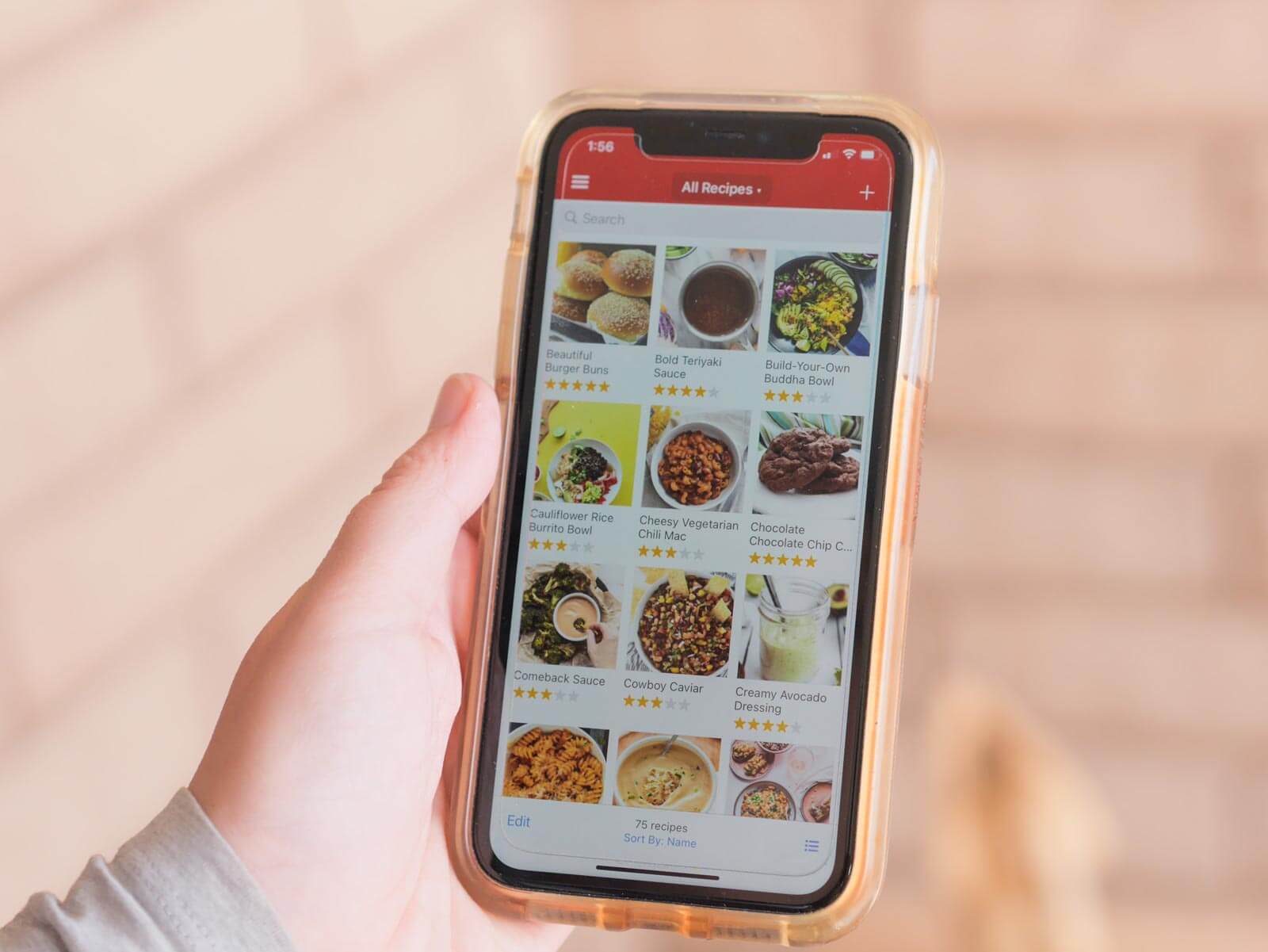
In Paprika, you can create grocery lists for each store where you shop. Since you’ll need to coordinate large provisioning runs or orders when you’re at a marina, this is a helpful feature.
Online recipes are effortless to save, organize, and find when you need them. Plus, you can add your own notes and your own recipes to the mix. You’ll also have access to the ingredients and directions offline. This is a great feature for passages or anchorages with spotty or no connection.
Lastly, there is a meal planning section that integrates with your saved recipes. Perfect for passages and planning for eating fresh foods first.
Long-Lasting Alternative Ingredients
Some of our favorite ingredients for long-lasting provisions are below.
Dried Foods
There are a lot of dried food options out there. Here are a few that we use consistently.
- DRIED MILK. I was a little skeptical of this at first, but it’s actually excellent for cooking. Just whisk it up with a little water and it’s good to go. We also use it in hot tea. We use this brand of dried milk.
- TOMATO POWDER. Just add water to make this into a tomato paste, and add more water for a sauce. I love this stuff because you avoid wasting half a can of tomato paste when you just need a few tablespoons. We like Harmony House Food’s tomato powder.
- DRIED JALAPENOS. This dried option is a suitable replacement for fresh jalapenos when adding them to a stew or even blending in homemade hummus. I’ve tried a few dried veggies options from Harmony House, and the jalapenos and bell peppers are my favorite.
Canned Foods
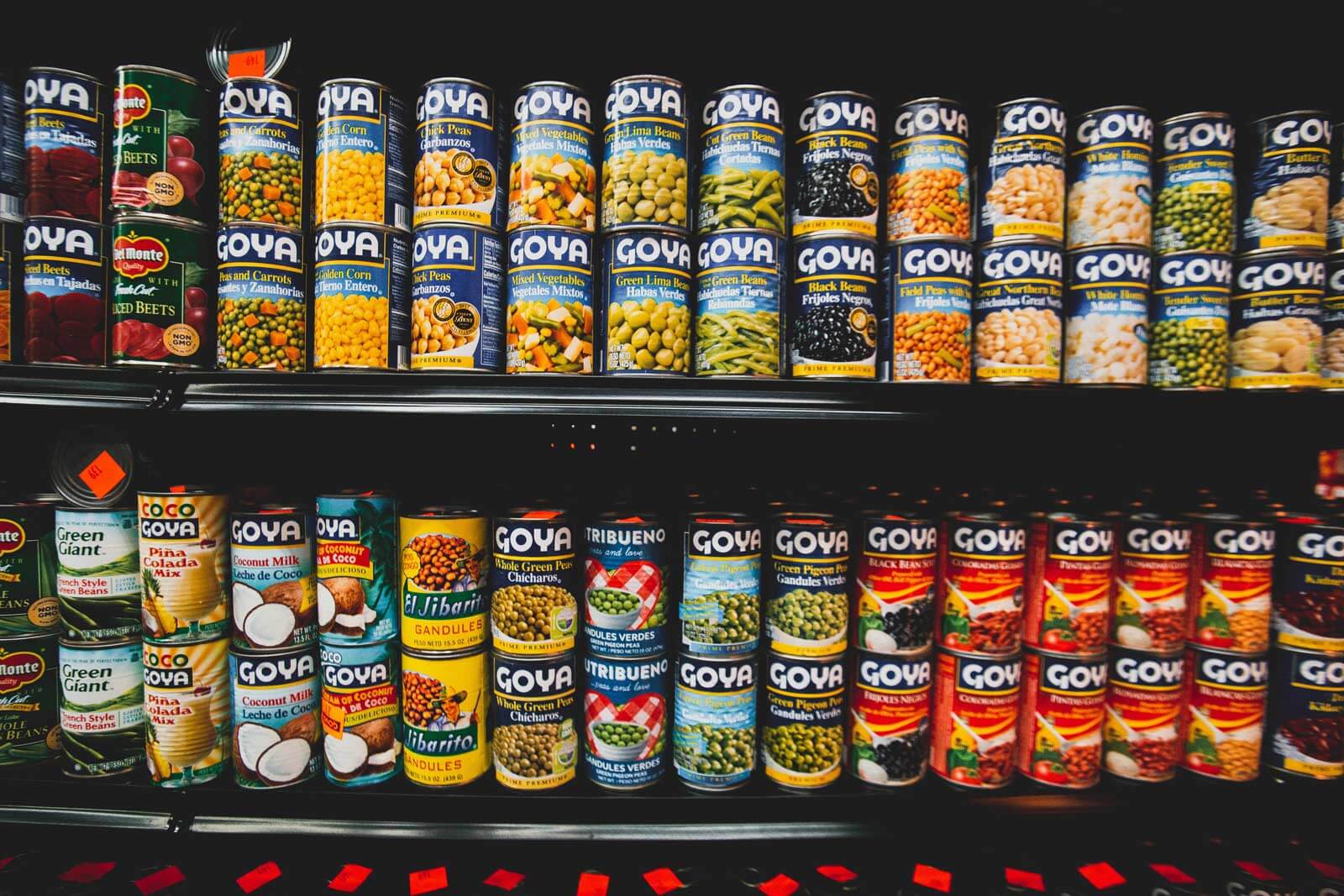
Here are a few canned foods that are essential to making your fresh ingredients go further in the boat galley.
- ARTICHOKES. Perfect for dips and hummus, they can also make a good pasta dish. They are one of our favorite ingredients in this Spanish rice recipe.
- BEAN SPROUTS. A great canned addition to a stir fry or teriyaki dish.
- COLLARDS. As a replacement for fresh kale in a soup or stew.
- GREEN CHILIES. Add green chilies to make scrambled eggs come alive, spice up a tomato and bean dish, or for just the right amount of Mexican flavor to a burrito bowl.
- MUSHROOMS. Toss in a stir fry, a spaghetti sauce, a ramen bowl, or on a pizza.
- NUT MILK. Although not exactly canned, in the U.S., you can buy almond milk in bulk in Tetra Paks. You’ll only need to refrigerate the carton after it’s open. Almond milk is another good option for cooking. You can also add to smoothies or to coffee or tea as a creamer.
- OKRA. Add to a stew or in a black-eyed pea and tomato dish.
- PUMPKIN. A tasty option for muffins, try with a little almond or peanut butter for the perfect snack. One of our favorite marinaras is this pumpkin pasta sauce.
- ROASTED RED PEPPER. Perfect for Greek salads when you have fresh romaine. These are also great in tomato dishes or as a pizza topping.
- TOMATOES. An obvious but still fantastic canned food choice is tomatoes. They really are very versatile – from finely chopped or strained to chunks and whole tomatoes. They can provide a base for many Mexican, Italian, or American dishes.
- TUNA. In addition to tuna salad wraps or sandwiches, we love this quick and tasty tuna snack with an Asian flair.
Fresh Foods
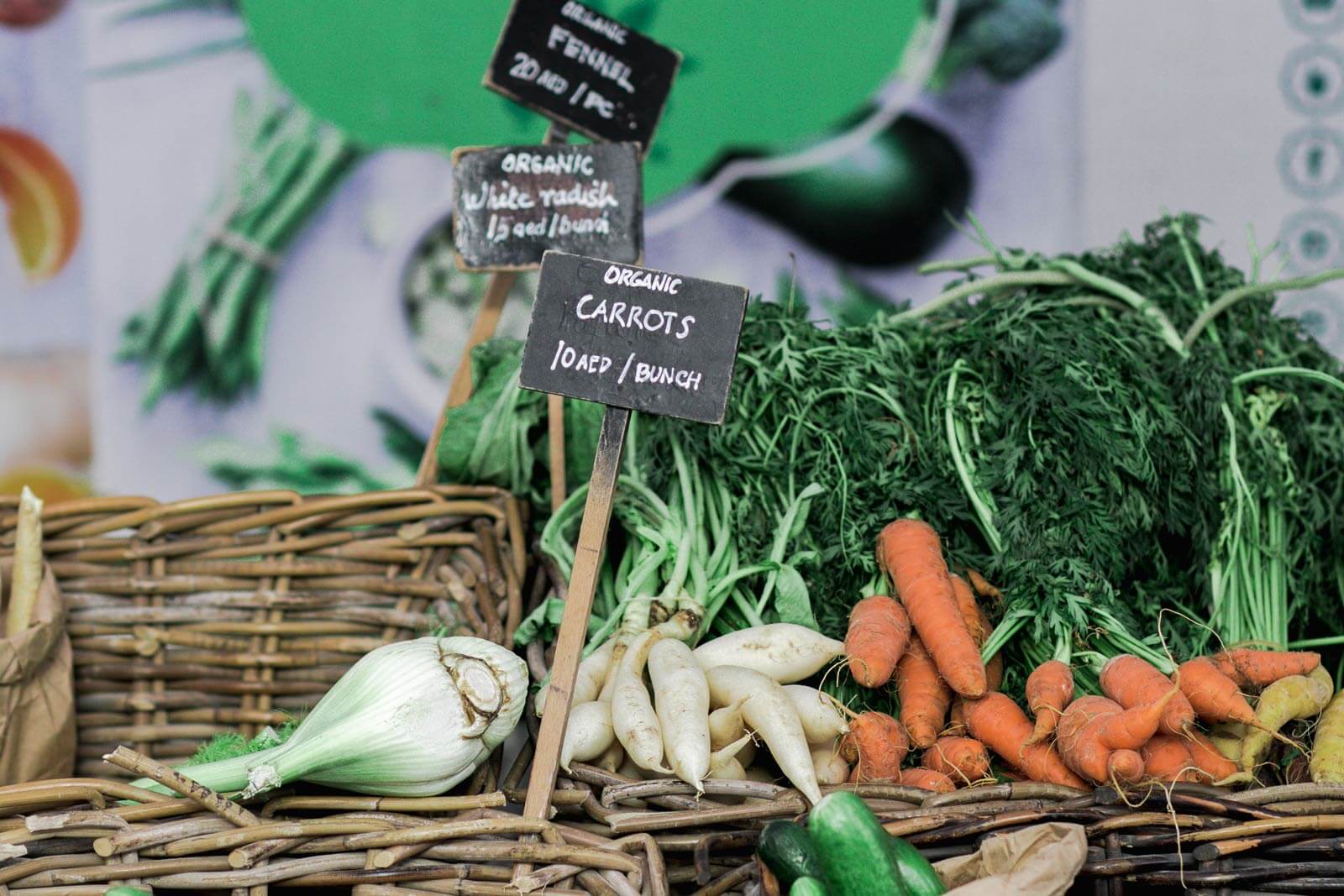
When available, purchasing your vegetables at a market will provide you with the freshest foods. They’ll last much longer than what you’ll find at a chain grocery store.
At grocery stores, opt for veggies that are whole instead of pre-cut for maximum longevity. And the dirtier, the better! Don’t wash them until you’re ready to eat them.
Here are a few fresh vegetables, fruits, and cheeses that keep fresh for weeks (or even months) on a boat.
- APPLES. Apples are a great fresh alternative as an oatmeal topping once the bananas are gone. They are also a great snack on chocolate rice cakes with peanut butter!
- BUTTERNUT SQUASH. Fall squash are some of the longest-lasting veggies you can put on the boat. Butternut squash is a star in curries or veggie chili.
- CABBAGE. Fresh cabbage is delicious sauteed or thrown on the grill. It’s also the perfect add-in for all your favorite Asian dishes, including stir-fries and ramen. And don’t forget fish tacos!
- CARROTS. Carrots are a super versatile vegetable. They can be added to so many dishes for a little boost of fiber. Try them in all your Asian-inspired dishes, as well as salads, sushi, coleslaw, and stews.
- CELERY. Celery is essential for the base of a hearty soup or other tomato dishes.
- ONIONS. The base of so many dishes – red and yellow onions are a must in your galley. Eat raw, cooked, or pickled for variety on the boat.
- POTATOES. Potatoes are an easy side or substitute for rice to fill up the crew. Potato salad is always a hit at cruiser potlucks. Potatoes are also a hearty addition to soups and stews.
- SUGAR SNAP PEAS. These are great in soups, stir-fries, and curries.
- PARMIGIANO REGGIANO. This hard, long-lasting cheese can add a savory, nutty flavor that steps up your finished dish. The longer the cheese has aged, the longer it will last in the fridge. Wrap in beeswax with an outside layer of plastic wrap for ultimate freshness. Add to soups, salads, pasta dishes, roasted veggies, fruit, and more. If you enjoy making your own stock, you’ll want to add one of these cheese rinds for a more well-rounded flavor!
A Word About Vegetarian(ish) Diets on a Boat
About four months before we moved aboard, we cut out animal products for health reasons. Since then, we have added cheese and eggs back to our diet, as well as fish. And we’ll still have other meats on a special occasion.
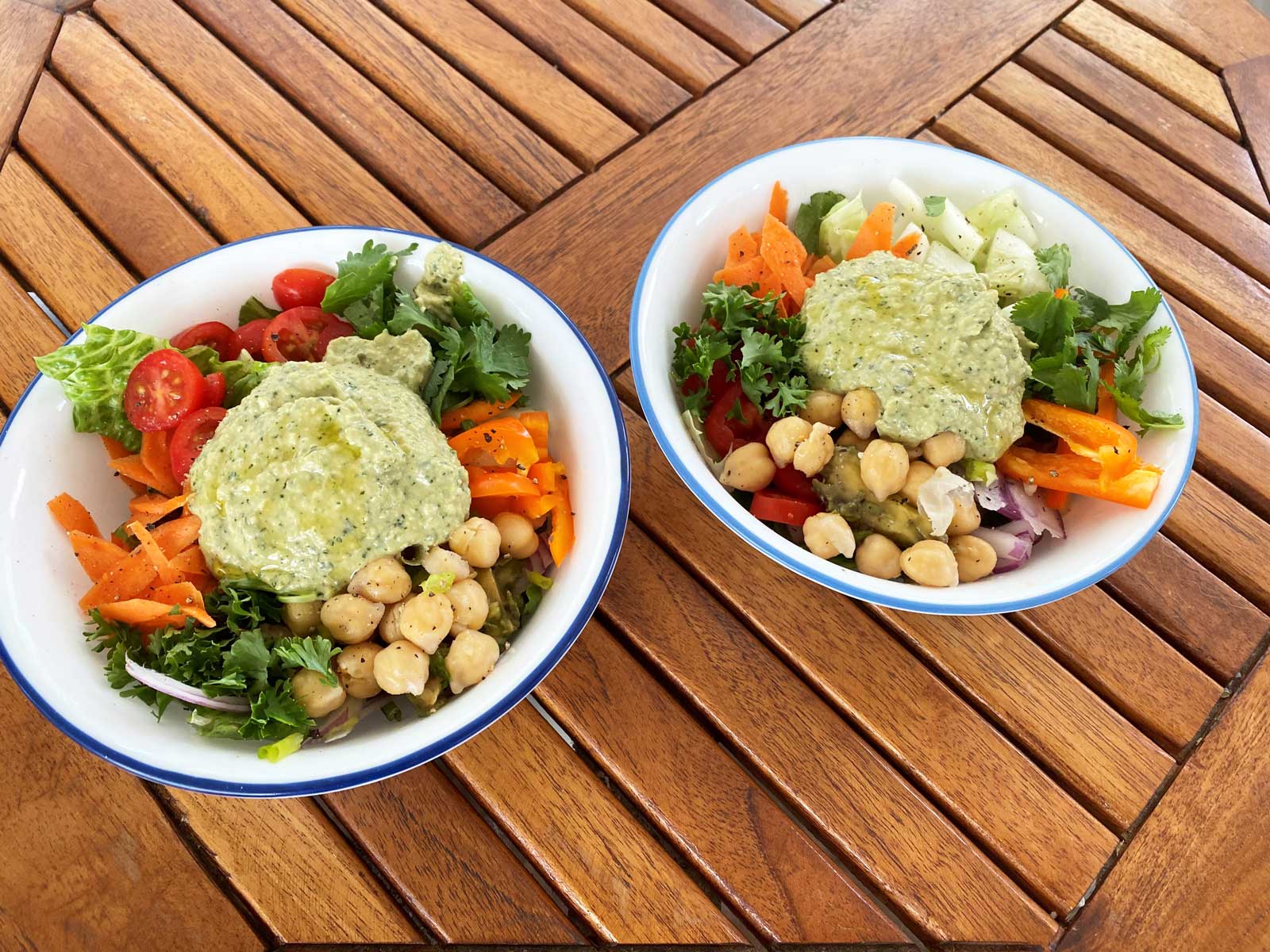
When we first cut out meat, I had no idea how much it would positively impact our provisioning trips. Not having meat and dairy opens up more room in our tiny fridge and keeps our wallet a little fatter. We love Tempeh (cooked soybeans that are fermented). Although it does require refrigeration, it has a decent shelf life in the fridge and stores flat.
Cutting out meat is a personal decision, but everything about what we eat is personal. If you’re interested in creating space in your fridge, animal products are an area where you can adjust your eating habits.
Final Thoughts on Provisioning
With the right ingredients and preparation, you can create some fabulous meals on a sailboat. As you hone your provisioning skills, you’ll see you can make healthy, delicious meals weeks after your last provision.
Beautiful homemade minestrone comes together with hearty fresh veggies and a few canned options. Tacos spring to life with pickled red onions, freshly cooked pinto beans, and fresh-cut green onions.
Provisioning allows you to broaden your cooking horizons with new types of food and flavors. Part of the journey of living aboard is found through the meals we cook.
Want to learn more about cooking onboard?
For more ideas on meals, provisioning, and how to outfit your galley view our guide.
Like this post? Save it on Pinterest for later.
